#comte de provence
Explore tagged Tumblr posts
Text

Louis XVIII, Roi de France. Par Peter Edward Stroehling.
#peter edward stroehling#peter edward ströhling#royaume de france#maison de bourbon#louis xviii#roi de france#vive le roi#comte de provence#louis stanislas xavier de france#kingdom of france#house of bourbon#royalty
26 notes
·
View notes
Text

"Portrait of King Louis XVIII", miniature, 1816.
#louis xviii#comte de provence#french monarchy#house of bourbon#french royal family#long live the queue
2 notes
·
View notes
Text

Louis-Stanislas-Xavier (1755–1824), comte de Provence, Later Louis XVIII, King of France. By Joseph Boze.
#joseph boze#royaume de france#maison de bourbon#louis stanislas xavier#comte de provence#louis xviii#roi de france#vive le roi#kingdom of france#house of bourbon#provence#bourbon#king of france
1 note
·
View note
Text


Raspberry jam and Dolly frosting on toasted bread.
1 note
·
View note
Text
just noticed that de voeux from the terror is played by sebastian armesto
1 note
·
View note
Text

An illustration of Marie Antoinette breaking up a fight between Louis Auguste (future Louis XVI) and Louis Stanislas (the comte de Provence) over a broken porcelain object. This illustration, from Era Magazine, was based on a real incident.
In June of 1772, ambassador Mercy wrote to Maria Theresa:
"M. le comte de Provence had an object made from beautifully worked porcelain on the fireplace in his room, and when M. le dauphin was in his room, he usually picked it up and looked at it. This seemed to worry M. le comte de Provence and, just as Mme la dauphine was teasing him about this, at that very moment, M. le dauphin dropped it and it smashed to pieces. M. le comte de Provence, in his immediate reaction of anger, went up to M. le dauphin; they grappled with one another and punched one another. Mme la dauphin, who was very embarrassed at this behavior, had the presence of mind to separate them. Reconciliation followed immediately; no one witnessed the quarrel and nothing happened as a result."
Translation: Margaret Macleod, There Were Three of Us in the Relationship. Image from my collection.
#marie antoinette#louis xvi#french history#louis dropping it just as someone's like “omg you think he's gonna drop it? aww” is just. it's me. I'm louis here.
131 notes
·
View notes
Text

Portrait of the Comte de Cromot, Superintendent of the Comte de Provence, at an Easel, Accompanied by his Two Daughters-in-Law
Artist: Antoine-François Callet (French, 1741–1823)
Date: 1787
Medium: Oil on canvas
Collection: The Huntington Library, Art Museum, and Botanical Gardens, San Marino, CA, United States
Description
This is a full-length portrait of Jules-David Cromot du Bourg, Comte de Cromot (1725–1788), seated at his easel and accompanied by his two daughters-in-law, Sophie de Barral (1713–after 1743) and Marie Sophie Guillauden du Plessis (1767–1846).
#group portrait#interior#artist's studio#conversation piece#portrait#narrative art#women#man#full length#table#easel#chair#velvet cloth#canvas#palette and brush#green curtains#drawing#costume#oil on canvas#painting#fine art#artwork#oil painting#comte de cromot#family#french culture#french art#antoine francois callet#french painter#european art
10 notes
·
View notes
Text
Je viens enfin de voir le Comte de Monte Cristo, et je vais pas mentir, même si j'ai majoritairement passé un bon moment, pas mal d'aspects m'ont déçue.
Premièrement, contrairement à beaucoup de gens si je me réfère aux quelques posts que j'ai vu passer, j'ai pas assez ressenti le côté jouissif de la vengeance. Au contraire, le film prend clairement parti de dire que la vengeance a un coût, et que Monte Cristo a tort, quelque part (avant qu'il mette de l'eau dans son vin). Étrangement, la réputation de Morcerf n'est pas ruinée, c'est une vengeance privée, presque sordide, alors qu'il est le plus gros morceau des trois, et donc celui qui aurait dû ressentir la justice le plus fortement.
Mais surtout, il y a la vengeance, okay, mais où sont les récompenses, dont il parle dans le même souffle ? Elles sont tout aussi jouissives que la rétribution, normalement : le pouvoir de faire le bien, autant que de se faire justice. De tout le film, Dantès ne sauve personne. Il arrive toujours trop tard. Angèle meurt. Morell est mort, et, bien qu'on aie pris la peine de nous présenter son fils, qui sans doute est dans une situation difficile après la ruine de son père, il n'y a pas de scène où Monte Cristo arrive tel un deus ex machina pour le sortir de la misère avec ses diamants et ses faux documents. Puisqu'il n'y a pas de justice publique pour Morcerf, il n'y en a pas non plus pour Haydée.
Ensuite, et c'est adjacent, on ne la sent pas, la fortune de Monte Cristo. Certes, ils ont tout donné dans les demeures, les décors, mais montrez-nous de l'or, des diamants, du pognon ! Le diamant à peine montré à Caderousse devrait faire l'amour à la caméra, qu'on sente vraiment le poids, la valeur, de ce diamant, ce qu'il représente pour changer la misérable vie de Caderousse. Montrez-nous les extravagances de Monte Cristo, son pouvoir. Il est austère, sinistre, comme dans le livre, certes, très bien, mais là tout ce qui l'entoure l'est aussi.
Où sont ses serviteurs ? C'est à peine si son bras droit, qui est censé être son portier (un rôle d'une importance capitale, et qui fait que normalement on n'entre pas chez lui comme dans un moulin, faut pas déconner), a un rôle dans le film, et il n'y a littéralement personne d'autre.
Où est sa science ? L'abbé Faria lui a enseigné bien plus que juste l'italien, l'anglais et le roumain (dont par ailleurs, Pierre Niney a fait une excellente performance !). Je sais bien qu'il n'y avait pas le temps pour la science et les poisons et la philosophie, mais je le regrette.
Autre point qui me dérange : tout le monde est blanc. Haydée, le serviteur à peine aperçu, absolument tout le monde. C'est bien dommage quand on est en train d'adapter une œuvre de Dumas, et une histoire aussi cosmopolite.
En parlant de ça, où est Marseille ? Où est la Provence ? Pas une trace d'accent ou de cigales, on sent à peine qu'on est dans le sud, je trouve ça vraiment dommage :/ Même Mercédes est blanche et française (et déjà noble ??).
Autrement, Pierre Niney est très bien, la musique superbe, et c'est certain qu'on doit faire des choix drastiques pour adapter une histoire aussi fournie, simplement je trouve que le scénario aurait pu être un poil plus cohérent avec une dernière passe. Cela dit, il y a eu des moments où on ricanait joyeusement de ce que le Comte manigançait donc tout n'était pas décevant dans l'exécution de la vengeance...
Et puis j'ai adoré quand ils ont fait du Comte une figure Draculesque en lui donnant ses loups qu'il commandait en roumain ! Et, même si c'était par force maladroit (manque de temps) ils ont inclu explicitement Eugénie et Suzanne.
Mais enfin, mon adaptation préférée reste la série de téléfilms avec Gérard Depardieu pour l'instant.
10 notes
·
View notes
Note
In history, has a second son ever tried to take the throne from the first born son?
Multiple younger siblings have had desires for the throne. There's King John, Arsinoe IV, Robert Curthose (though this is a reverse case, an older brother with designs on his younger sibling's throne), the Comte de Provence, the Comte d’Artois, Elizabeth I.
9 notes
·
View notes
Text
lafayette throws it back at versailles not clickbait (lafayette pt. 2)
im not gonna lie, this is my favorite part of lafayette's life to talk about. he was so teenage boy i love it. anyway, if you missed out on part one, here's the link. @thereallvrb0y and other esteemed guests, i hope you enjoy
Court Life
Lafayette was presented at the Court of Versailles on Saturday, March 26, 1774 when he was 16. I'm not gonna go super in depth about how the court works (but it is very interesting, i recommend learning about it), but i will tell you that Gilbert was the biggest black sheep, which was unideal because the court was already judgmental as hell.
Several different people described how awkward Lafayette's demeanor was, and it made a lot of people think he was just rude. Lafayette said this was only made worse "by the gaucheness of my manners which, without being out of place on any important occasion, never yielded to the graces of the court or to the charms of supper in the capital." -Mémoires
The Comte de Ségur was a close friend, who recognized that Gilbert wasn't just an asshole, and he was deep down a very passionate person. (Ségur experienced this first hand when Lafayette tried to duel him over a girl that Ségur didn't even know).
His awkwardness wasn't helped when he danced with Marie Antoinette and, well... "...the Queen could not stop herself from laughing." -Correspondance entre le Comte de Mirabeau et le Comte de La Marck
When I say Lafayette was very passionate deep down, it wasn't actually... that deep down, and he still proved himself to be his rebellious teenage self in what I like to call the Comte de Provence Incident.
The Comte de Provence was the brother of Louis XVI, and, obviously, held a major place in court. Like the king, he had a little entourage of men who followed him around and did whatever he said. This was a position that offered a lot of opportunities, but you didn't just. insert yourself into it. You had to be invited. And, at the time, The Noailles family was trying to find a permanent place for Lafayette at Versailles.
So, in 1775, the Maréchal de Noailles tried to get Lafayette in this little entourage, and had to introduce him to Provence, an opportunity for which came in the form of a masked ball before Lent (in France, this is just a lame Mardi Gras).
This would have gone fine if Lafayette wasn't completely determined to fuck shit up. so.
Lafayette and Provence were talking (wearing masks, this is an important detail), and Provence started bragging about how good his memory was. Lafayette responded by saying "memory is a fool's intellect". Provence was like "uhhh wtf" and just assumed that Lafayette didn't realize he was the King's brother, so he said "do you realize who the fuck you're talking to you little shit" (obviously not a direct quote, it was in French.) And. Lafayette responded. just being like. "yeah lolz"
So, he didn't get a place at Versailles.
Which is kinda stupid! He should not have done that! Because at this time he was really trying to get a rank in the French army, and he could have had a better opportunity, but whatever because he was granted a command for a full company in Metz.
Uh oh, suspicious shit is going on
While in Metz (not really doing anything important), Lafayette met Comte de Broglie, who was the ambassador of Metz. Broglie was suspicious as fuck and had a career of weird secret projects under the crown, including a plan to invade England.
Broglie had heard of the American cause (which was, at this point, pretty far along and going to shit). He thought that Washington was replaceable, and that he could lead the rebel forces, and then colonize them for France. Not! Good!!
When Broglie met Lafayette, he was like.... this kid is. dumb as fuck. So, he introduced him into his circle, therefore introducing him to Revolutionary ideology. Little gullible Gilbert saw Broglie as like an idol, and since Broglie was a Freemason, Laf decided to become one too. This was significant because being a Freemason is the reason Gilbert met Prince William Henry, Duke of Gloucester and Edinburg. If you're like "hmmm Prince William Henry, Duke of Gloucester and Edinburg, that name rings a bell", you're a nerd, and its because he was King George III's younger brother who was weirdly supportive of the colonies' rebellion.
Along with Prince William Henry, Duke of Gloucester and Edinburg and Broglie I guess, Gilbert was introduced to the ideals of Abbé Guillame Raynal, who preached anti-monarchy, anti-clergy, and anti-slavery rhetoric. So, basically, Lafayette was radicalized and became a blue haired liberal.
Eventually, Broglie and "Baron" Johann de Kalb (he's in Duty and Inclination in case you were wondering) to go to America woo!!!
Side note on de Kalb, he's not evil like Broglie, though he did know about the plan. He ended up legitimately helping the revolution, so shout out de Kalb
Lafayette convinced his buddy Ségur and his brother in law, Vicomte de Noailles, to go with him. Together, they all visited Silas Deane, who is a fucking dumbass who kept giving French people paid commands without permission from Congress *foreshadowing noise*
Lafayette used all six of his sweet wholesome cinnamon roll twink braincells to create a plan to get out of France without getting caught, and the author of The Marquis; Lafayette Reconsidered, Laura Auricchio, has a very good take on Lafayette's character shown in this instance:
“Although he often described himself as a man of action, Lafayette was more deliberative than he let on, and he habitually watched and waited before determining the best way to proceed; once he chose his course, however, it was almost impossible to steer him away.” -Laura Auricchio
So, the pact to join the American Revolution between Lafayette Ségur and Noailles was made in October 1776. Lafayette was optimistic, as always, but still expected nothing but obstacles, the most formidable of them being from the Noailles family.
First things first, they met with Deane, as I mentioned, with de Kalb translating. They signed a letter of agreement on December 7, 1776, which completely overlooked the fact that Lafayette had 0 qualifications to be a major general. Then, Lafayette bought a ship named La Victoire. The Gang (tm) met continuously in secret.
Then, Lafayette sent two letters, one to Adrienne, and the other to duc d'Ayen, explaining his departure and expressing his regret, especially since Adrienne was pregnant and raising their young daughter.
Quick breakdown of the Lafayette kids: Henriette du Motier de Lafayette was born on Decmeber 15, 1775, making Lafayette a girl dad from the beginning. Adrienne was pregnant with Anastasie Louise Pauline du Motier de Lafayette when Gilbert departed, and she gave birth to her on July 1, 1777. You can tell which two were born after the Revolution just by their names: Georges Washington Louis Gilbert du Motier de Lafayette (born December 24, 1779 after Lafayette's visit back to France), and Marie Antoinette Virginie du Motier de Lafayette, known as Virginie (a reference to Virginia), (born on November 2, 1782, after Lafayette returned home after Yorktown).
Lafayette's disappearance was... a massive scandal. And you may be thinking "why? like yeah he's rich but clearly no one likes him, who cares where he goes?"
The king. The king cares where he goes. The main reason being that France was not openly at war with England aaand Lafayette may or may not have met King George III. Personally. Like a few weeks before he left. Aaaand the British government might just assume that a nobleman of such high status, that they knew personally, leaving to join the colonies' rebellion is an act of war. so. the king cares a lot.
D'Ayen panicked and wrote to Louis XVI telling him that Lafayette was gone like the good bootlicker snitch he is, and Louis issued orders for Lafayette's arrest. He was almost caught a couple times, so he had to travel in disguise (this is why people talk about him dressing up as a woman, tho we can't really prove or disprove that), but La Victoire set sail before they could catch him, and Lafayette embarked on his first very seasick journey across the sea.
This one is a little short, because if I had gone into as much detail about how everything works, it would be unnecessarily long, and the next few will likely be unnecessarily long because they are about the Revolution *eagle screech* so yeah, look out for that
#history#amrev#marquis de lafayette#lafayette#adrienne de lafayette#henriette de lafayette#american history#french history#frev#amrev history#do it for richie 💪#publius originals
38 notes
·
View notes
Text

René d'Anjou (1409-1480). Unknown artist.
#royaume de france#maison de valois#maison d'anjou#valois anjou#ducs d'anjou#duc d'anjou#prince du sang#le Bon Roi René#rené d'anjou#comte de guise#duc de bar#duc de lorraine#roi de naples#roi de sicile#comte de Provence et de Forcalquier#comte de provence#roi de Jérusalem#pair de France#regno di napoli#re di napoli#house of anjou
4 notes
·
View notes
Text
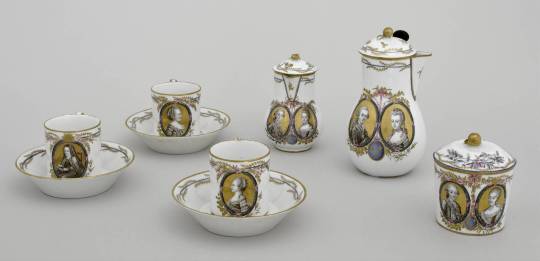
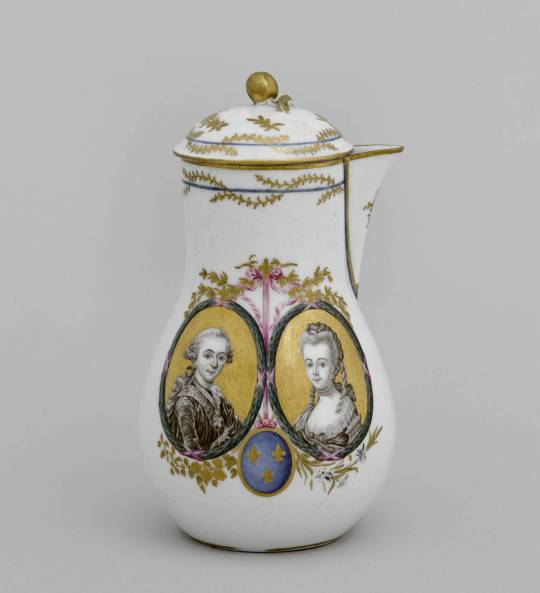
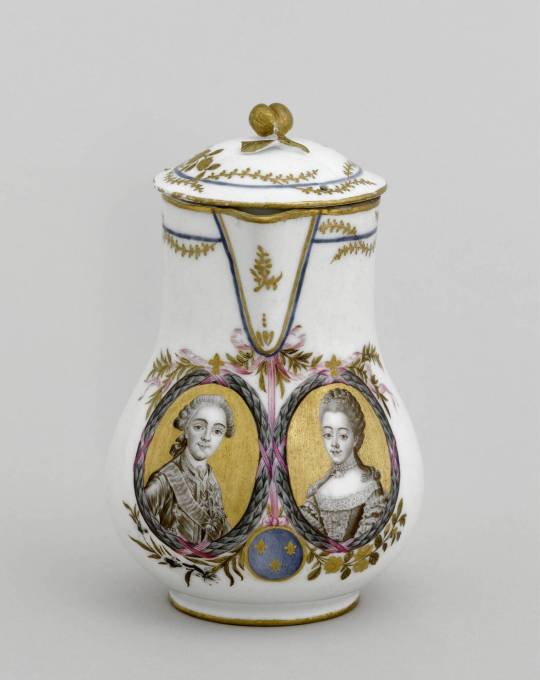
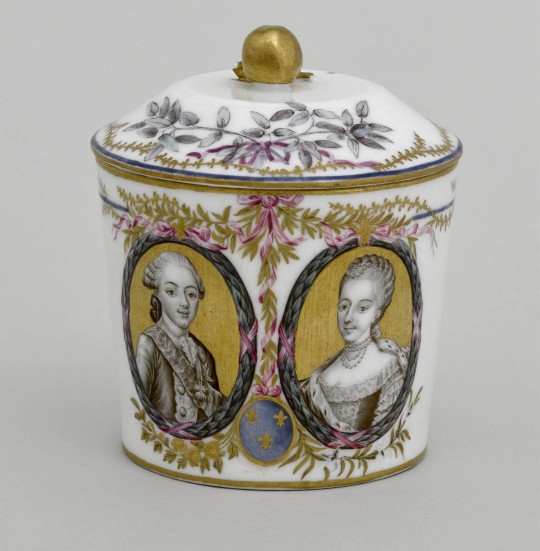
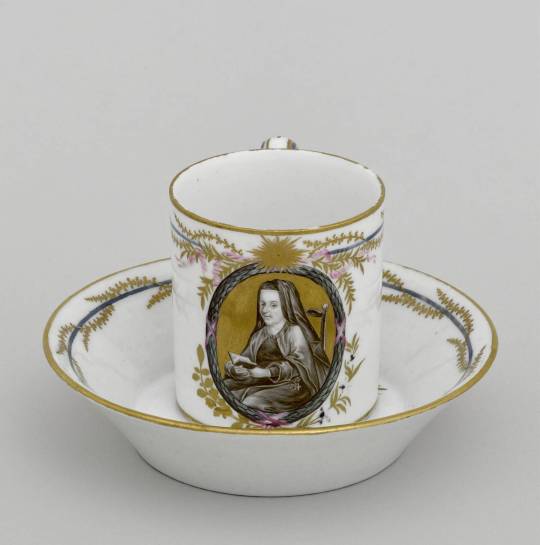
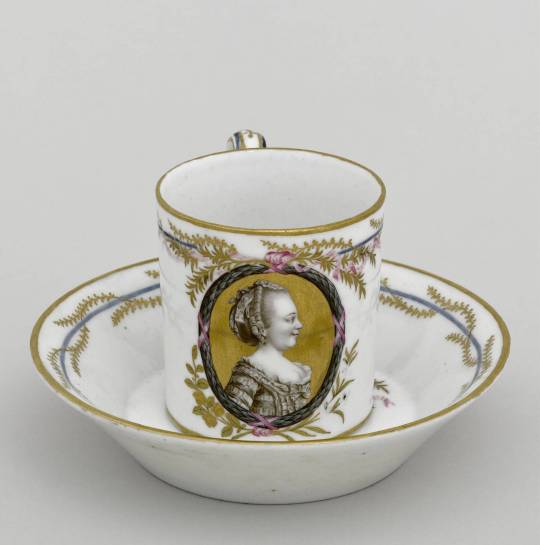
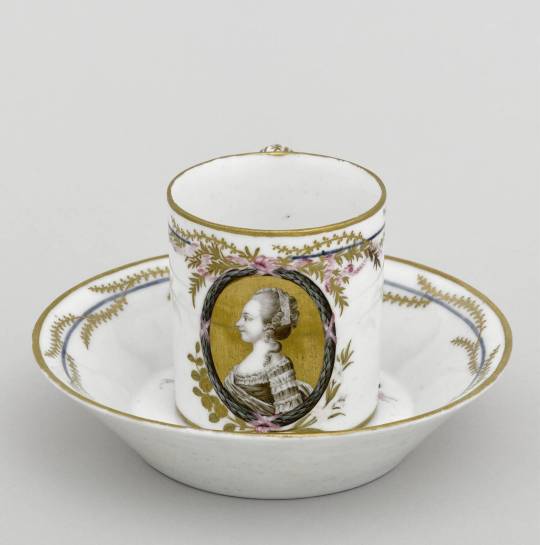
A set of porcelain dishes with images of the French Royal family on it, made in 1778-1779.
The coffee pot has an image of Louis XVI and Marie Antoinette.
The milk jug shows the Comte and Comtesse de Provence.
The sugar pot depicts the Comte and Comtesse d'Artois.
The cups portray 3 princesses: Madame Louise, Madame Clotilde, and Madame Elisabeth.
Source
#marie antoinette#louis xvi#comtesse d'artois#charles x#louis xviii#madame louise#madame clotilde#madame elisabeth#chateau de versailles#marie josephine of savoy#maria theresa of savoy#long live the queue
126 notes
·
View notes
Text
rating random historical figures that appear in the rose of versailles by their names (+ their titles but in french for the drama):
Antoine-Louis-Marie de Gramont, duc de Guiche: wtf is a gramont. 4/10
Bernard Châtelet: like the dog? 2/10, -1 for the Rosalie situation
Charles-Philippe de France, comte d’Artois: would be better if it was just Philippe because one Charles is more than enough. 3/10
Charlotte de Polignac/Aglaé de Polignac, duchesse de Guiche: yeah i’d kill myself too if that was my name. 1/10
Christoph Willibald Gluck: 6/10
Honoré-Gabriel Riqueti de Mirabeau: sounds fake. 5/10
Jeanne de Valois-Saint-Rémy, comtesse de la Motte: remy like the rat!! 4/10
Yolande Martine Gabrielle de Polastron, comtesse puis duchesse de Polignac: holy moly. 6/10
Étienne-Charles de Loménie de Brienne: Étienne was the only good part. 3/10
Louis-Joseph Xavier François de France: goes pretty hard ngl. 8/10
Louis-Stanislas de France, comte de Provence, Louis XVIII: i’ve had enough Louis. i am done. 4/10
Marie-Thérèse Charlotte de France, duchesse d’Angoulême: mrs. Antoinette was not playing around with her kids names goddamn. Thérèse is a banger name. 7/10
Louis Marc Antoine Rétaux de Villette: another goddamn Louis. 4/10
Sophie Piper/Eva Sophie von Fersen: Sophie Piper sounds like the name of a mommy vlogger. 0/10
Stanislas Leszczynski, roi de Pologne, duc de Lorraine et de Bar: he’s literally mentioned once and never again, but holy shit, that’s definitely a name. 7/10
Rosalie Lamorlière: YEAAHHHHH LET’S GO. ROSALIE LAMORLIÈRE WAHOOOO!!!! 11/10!!!!
4 notes
·
View notes
Text
Burgund – Zu schön, um achtlos durchzufahren
Große Wälder, alte Städte und viel Kultur - Eine Zeitreise in Frankreichs grünes Herz
Lange, viel zu lange war Burgund nichts weiter als ein Durchfahrtsland, um möglichst schnell in den begehrten Süden Frankreichs zu kommen: In die Cevennen, die Provence, an die Cote Azur oder noch weiter ins Roussillon. Die meisten Kilometer auf eintönigen Autobahnen oder schnurgeraden Schnellstraßen. Dass Rheinland-Pfalz stets die Werbetrommel für ihre Partner-Region gerührt hat, hat mich kaum überzeugen können, dort mal einen Urlaub zu verbringen. Nach den schlechten Erfahrungen, die ich im Malu-Dreyer-Land gemacht habe, hat mich das aufgebauschte Partnerschaftsgesäusel eher abgeschreckt.
Nun, die Zeiten haben sich geändert; und auch ich habe mich geändert. Dieses Jahr war es in Südfrankreich über 45 Grad heiß. Ich kippe schon bei 35 Grad buchstäblich aus den Latschen. Früher konnte ich – oftmals mit sehr unkomfortablen Autos (zum Beispiel ohne Klimaanlage) – mehr als 1000 Kilometer am Tag zurücklegen. Heute bin ich nach 670 Kilometern – auch nach Fahrerwechsel – froh, wenn ich am Ziel bin. Da es anderen Leuten um die 70 ähnlich geht, bin ich in guter Gesellschaft.
Bei vielen Rückfahrten aus Südfrankreich, die, um Maut zu sparen viele Kilometer über Landstraßen durch das Gebiet um Besancon führten, habe ich mir hin und wieder gedacht: Eigentlich ist es hier auch ganz schön. Warum nicht mal in Burgund oder Franche-Comte Urlaub machen? Und dann gibt es da noch jenes geheimnisvolle Mittelgebirge mit seinen alten keltischen Städten, das alten Zentrums Frankreichs. Den MORVAN. Ein Gebirge voller Geschichten und Legenden. Allen voran die Belagerung der keltischen Städte Alesia und Bibracte, Hauptstadt der Haeduer, die im lateinischen Klassiker „Bellum Gallicum“ von Cäsar ausführlich beschrieben werden. Alesia wurde erstürmt, ihr Führer und Nationalheld Vercingetorix fand ein trauriges Ende. Bibracte ergab sich, wurde verschont und bildete fortan die Keimzelle der „Galloromanischen Kultur“, die nach dem Zusammenbruch des römischen Reiches angereichert mit fränkischen und Burgundischen Einflüssen zu dem wurde, was wir heute als „christliches Abendland“ bezeichnen. Bald schon siedelten Römische Händler zwischen den Gehöften der keltischen Adligen. Aus dem Oppidum wurde eine römische Stadt. Irgendwann zogen die Bewohner gemeinsam ins nahe Arroux-Tal und bauten die Stadt Autun auf. Seitdem ist der markante Berg ein Eldorado für Schatzgräber und Archäologen.
Dies alles ist im Keltenmuseum am Fuße des Mont Beuvray nebst spektakulären Fundstücken bestens dokumentiert. Ebenso wie die Geschichte der keltischen Kultur, die sich auch über weite Teile von Deutschland, England, Österreich, Norditalien, Tschechien, Spanien und den Balkan erstreckt. Natürlich steckt im Keltenmuseum von Bribacte unverkennbar eine Menge chauvinistischer links intellektueller Politik: Frankreich als Zentrum Europas und das Oppidum so etwas wie eine heimliche untergegangene Hauptstadt? Zumindest waren die Haeduer der mächtigste gallische Stamm, und die Gallier schon rein flächenmäßig das wichtigste keltische Volk. Dass ausgerechnet der französische Präsident Mitterand persönlich den Grundstein für den bombastischen Betonbau legte und riesige Summen locker machte ist sicherlich kein Zufall. Mitterand war von 1959 bis 1981, bis zu seiner Präsidentschaft, Bürgermeister in der nahegelegenen Kleinstadt Chateau Chinon (2000 Einwohner). Dass er zeitgleich Abgeordneter war und auch andere wichtige Ämter in Paris innehatte wirft manche Fragen auf. Das Museum als persönliches Denkmal, Dank an die burgundischen Wähler und Bekenntnis zum Europa unter französischer (gallischer) Leitkultur?
Unter diesem Aspekt bekommt auch Mitterands vehemente Ablehnung der Deutschen Wiedervereinigung einen neuen Sinn, der nach genauerem Hinsehen gar nicht so neu ist. Der Osten Deutschlands hat nie zur keltischen Welt gezählt. Für Victor Hugo hörte das zivilisierte, also keltisch-romanisch-fränkische Deutschland bereits am Rhein auf. Die alte Bundesrepublik war daher in den Augen vieler Franzosen - egal welches poltisches Lager - , (unter anderem De Gaulle), nichts weiter als ein französischer Satellitenstaat. Eine Art gallische Randzone. Dass die Kelten sich ursprünglich von Deutschland und Österreich aus über Frankreich verteilt haben, wird im Museum kaum deutlich oder nur wage angedeutet.
Unabhängig von geschichtlichen Interpretationen ist eine Reise zum Berg Beuvray und zum umliegenden Morvan ein besonderes Erlebnis. Der Blick auf das benachbarte Uchon-Massiv und das südlich Beginnende Zentralmassiv ist einmalig. Rund um den Morvan erstreckt sich eine Landschaft, wie man sie aus dem Film „Herr der Ringe“ oder aus Asterix-Büchern kennt. Eine Auenlandschaft mit Eichen und Maronenwäldern. Dazwischen von Hecken und Hainen umgebene stattliche Einzelgehöfte, darunter etliche Schlösser. Natürlich dürfen wie im Asterix-Comic die „Idefixe“ nicht fehlen. Früher jagten die wehrhaften und meist freilaufenden Hunde laut Cartoon die unbeholfenen Römer. Heute sind es Touristen. Ironie off. Tatsächlich lief so ein Idefix in Schäferhund-Größe auf einer schmalen steilen Straße im Uchon-Massiv uns direkt vors Auto und sprang über zig Meter immer wieder wütend und laut bellend an der Seitenscheibe hoch. Ich will mir nicht ausmalen, was passiert wäre, wenn wir in diesem Streckenabschnitt bereits auf unseren Fahrrädern gesessen hätten…
Unsere Ferienwohnung unterhalb des Mont Beuvray in 450 Meter Höhe war ein Traum. Von einer großen Loggia und Terrasse aus hatte man einen weiten Blick ins umliegende Land und die Berge. Der Himmel Kondensstreifen frei. So gut wie keine Flugzeuge, und wenn, winzig klein. Nachts ein Sternhimmel mit kompletter Milchstraße, wie ich ihn in Deutschland noch nirgendwo gesehen habe. Kein Lichtsmog wie im Rhein-Maingebiet. Die nächste echte Großstadt Lyon mehr als 150 Kilometer entfernt. Dijon (190 000 Einwohner) mehr als 70 Kilometer und noch dazu hinter Bergen versteckt. In einer solchen Gegend braucht man im Schlafzimmer keine Rollläden. Es ist stockdunkel. Und dazu rufen die Käuze.
Dass man in einer solch einsamen Gegend keinesfalls abgehängt ist und anders als in Italien eine super Infrastruktur hat, ist ein weiteres Plus. Im nahen Dorf mit gerade mal 370 Einwohnern gibt es einen gut eingerichteten Lebensmittelladen, eine Apotheke, eine Tankstelle, einen Bäcker, einige Lokale, ein Hotel, einen Friseur und sogar eine Schule. Natürlich hatte auch unsere Wirtin einen freilaufenden Idefix, einen anhänglichen verschmusten Hund mit langen Schlappohren. Sie bat uns, natürlich auf französisch – zu unserem eigenen Wohl – das Tier weder zu streicheln noch zu füttern, da wir sonst keine Ruhe mehr vor ihm haben.
Wer nicht nur in den ausgedehnten Wäldern wandern will, sondern die Kultur und Sehenswürdigkeiten der Umgebung erkunden will, der kommt schon im 20 Kilometer entfernten Autun auf seine kosten. Ein römischer Tempel, zwei römische Stadttore, ein komplett erhaltenes Amphitheater und ein Mausoleum, lassen das Herz des Zeitreisenden höherschlagen. Hinzu kommt die gewaltige romanische weithin sichtbare Kathedrale, die zu den Highlights Burgundischer Architektur zählt.
Auch im nahegelegenen Beaune, der alten in einem Weinbaugebiet gelegenen Residenzstadt – ein Magnet für britische Touristen – gibt es viel zu sehen. Allen voran die Notre Dame und das Hotel-Dieu, ein ehemaliges Krankenhaus aus dem 15. Jahrhundert. Ähnliches erwartet den Besucher im weiter südlich gelegenen Chalon sur Saone. Die Altstadt mit ihrer romanisch gotischen Kathedrale erstreckt sich sogar auf eine Insel im Strom.
Die Saone ist nach Aufnahme des Doubs fast so breit wie der Rhein und dient bereits als Großschifffahrtsstraße. Man fragt sich, warum sie in Lyon, nach Einfluss der Rhone, die bis dorthin nicht einmal schiffbar ist, ihren Namen abgeben muss. Normalerweise gilt bei Zusammenflüssen etwa gleichgroßer Flüsse rechts vor links, zumal die Saone sogar die Richtung vorgibt. Seis drum, eine Radtour auf einem gut ausgebauten Weg entlang dieses wunderschönen Stromes ist ein Erlebnis. Wir haben die Tour in Tournus beendet. Auch hier entdeckt der Zeitreisende eine Highlight romanischer Baukunst: Die mehr als tausendjährige Kirche Saint Philibert, der älteste erhaltene romanische Großbau Frankreichs.
Für die einst größte Kirche der Welt, die Klosterkirche in Cluny, hat die Zeit nicht mehr gereicht. Aber auch die Motivation. Der fast 190 Meter lange und 33 Meter hohe Bau fiel um 1800 größtenteils der Spitzhacke zum Opfer. Muss man einen Ort der Barbarei, Geldgier, Kulturverachtung und Dummheit unbedingt besuchen? Die Antwort lautet: Nein.
Das übrige Fazit: Burgund ist eine Reise wert. Mit seinen Mittelgebirgen, Tälern, Hügeln, Fluss und Kanalläufen, ein ideales Land für Fahrradtouren. Allerdings könnte es in diesem Punkt mehr aus sich machen. Bei der Ausschilderung von Radwegen, gerade im Morvan aber auch im vorgelagerten Hügelland ist noch sehr viel Luft nach oben. Da hilft nur eine gute Karte. Und dann sind da noch die freilaufenden Idefixe, die ihr Terrain nicht selten auf die Zufahrts- und Verbindungswegen zwischen den Einzelgehöften und Chateaus ausdehnen und als wahre Cerberusse sogar die Durchgangsstraßen bewachen.
#Burgund#Autin#Morvan#keltenmuseum Bibracte#Mont Beuvray#Chalon sur saone#Saone#beaune#asterix#Tournus#Mitterand
2 notes
·
View notes
Text

The plan for Madame du Barry's apartments in 1770. Note that she had both a chaise room (for toilet facilities) and a bain/bathroom for bathing. Du Barry's bathroom had running plumbing, a feature which Louis XV, who was known for being very strict when approving plumbing construction for bathrooms, denied to his own daughters before approving for his mistress.
Courtiers who lived at Versailles who had the space for dedicated bathrooms (which at the time were for bathing only, as bathrooms were meant to be luxury spaces, not somewhere you'd put your commode!) had to apply to the king for the construction of running plumbing.
Under Louis XV, running plumbing appeals from courtiers were rejected on the basis that he only intended to approve this type of construction for royal apartments due to the expense--except in the case of his mistresse. And he didn't always approve such requests for members of the royal family (ie, his daughters).
Under Louis XVI, approval for plumbing was notably looser. We know that the apartments of Marie Antoinette, Louis XVI, Madame Elisabeth, the comte and comtesse de Provence, the three daughters of Louis XV (Mesdames); the comte and comtesse d'Artois; and select courtiers, including the queen's favorites, the princesse de Lamballe and duchesse de Polignac, and apartments reserved for certain ministers had running plumbing. (Although Marie Antoinette's Versailles apartments did not have running plumbing until 1788-1789, and it's unknown if she ever ended up using them.)
For residents, royal or otherwise, without running plumbing but who had large enough apartments to allot dedicated bathrooms, tub bathing would have been done with tubs that were brought into these rooms and filled by servants. This is how Marie Antoinette bathed when she took immersion baths:
Campan:
... a slipper bath was rolled into her room, and her bathers brought everything that was necessary for the bath. The Queen bathed in a large gown of English flannel buttoned down to the bottom; its sleeves throughout, as well as the collar, were lined with linen.
For residents of Versailles who didn't have enough rooms for a dedicated bathroom, tubs were rolled into their regular room(s) and filled by servants.

For servants who had tiny apartments that were basically just small rooms often big enough for a bed, a desk and a drawer, they would have used wash basins for regular washing, as everyone (including aristocrats) did for daily hygiene.
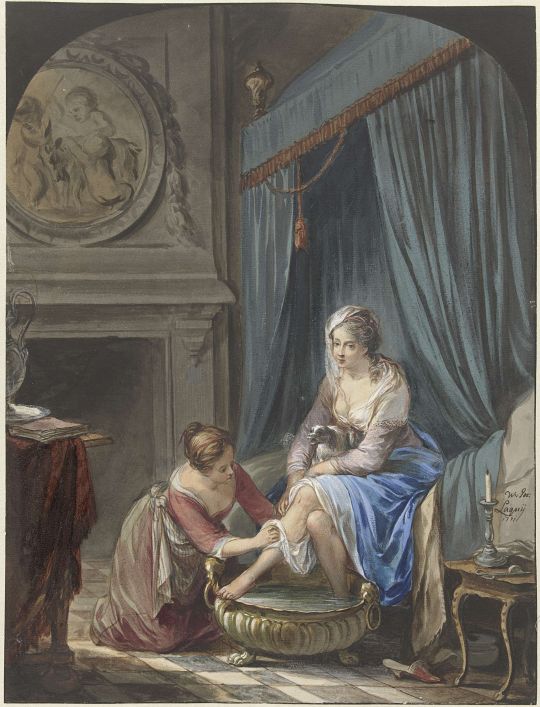
Image: A well-to-do woman being washed by a servant using a wash basin.
I don't think it would have been impossible for some servants to have had standing rolling tubs that they might have split among others, as people of modest means outside of Versailles would have done. But since documentation of 'lower servant' life at Versailles is limited, it's hard to say. They could have also gone to nearby rivers or lakes to bathe if they wanted full immersion baths. Louis XIV was known for bathing in rivers, especially after the hunt.
People, particularly aristocratic women who could afford specialized pieces like this, would have also used bidets to regularly clean their private parts.

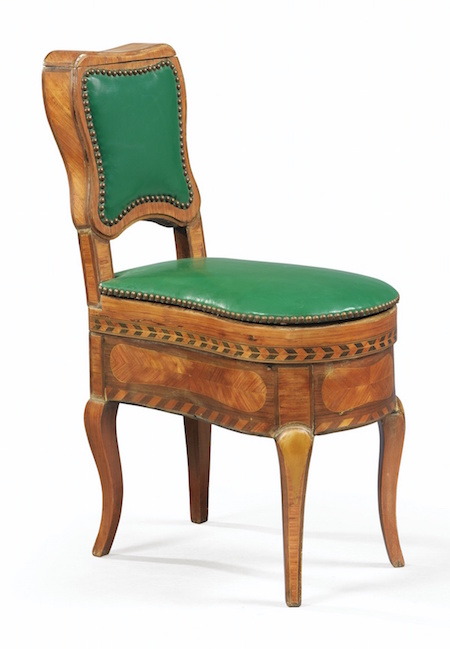
Oops I just meant to add the note about Du Barry getting running plumbing when Louis XV rejected his own daughters' requests for running plumbing, but have this other information too.
I am slowly working on a proper article about the myriad of popular culture myths about Versailles and hygiene, hopefully I will be able to sit down and force myself to finish it soon. Working on this particular article has definitely forced me to re-evaluate the general lack of solid historiography on the subject, even from historians that ought to be trusted to analyze and vet sources more seriously.
#versailles#french history#18th century#madame du barry#louis xvi by comparison was like#you get plumbing! you get plumbing! and you get plumbing!
186 notes
·
View notes
Text

Louis-Stanislas-Xavier de France, comte de Provence, comtesse de Segur, 1773, Élisabeth Vigée Le Brun (1755-1842).
0 notes